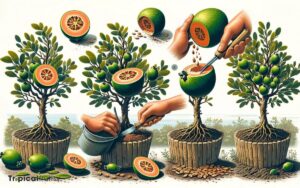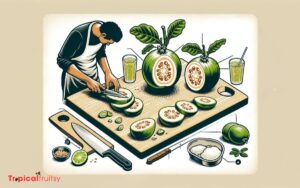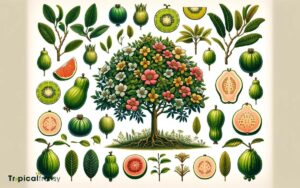What Is a Feijoa Fruit? Uncovering the Mysteries!
The Feijoa, also known as pineapple guava, is a sweet, aromatic fruit native to South America. It exhibits a flavor combination reminiscent of pineapple, apple, and mint. Rich in vitamin C and dietary fiber, feijoa fruits are a nutritious addition to any diet.
Feijoa fruits grow on an evergreen shrub and thrive in mild, subtropical climates. They are oval-shaped and green, harvested predominantly in autumn.
When ripe, feijoas yield slightly to gentle pressure and can be enjoyed in a variety of culinary applications.
To select the best feijoas:
- Look for a slight softness, indicating ripeness.
- Choose those with unblemished skin.
- Avoid overly soft or bruised fruits.
For storage:
- Keep at room temperature to ripen.
- Once ripe, refrigerate to prolong freshness.
In cuisine, feijoas can be used in:
- Smoothies
- Jams and jellies
- Baked goods
- Salads
Health benefits of feijoas include immune system support and digestive health improvement due to their high vitamin C and fiber content.
Feijoa fruit is a versatile, nutrient-rich food that tantalizes taste buds and supports overall health.
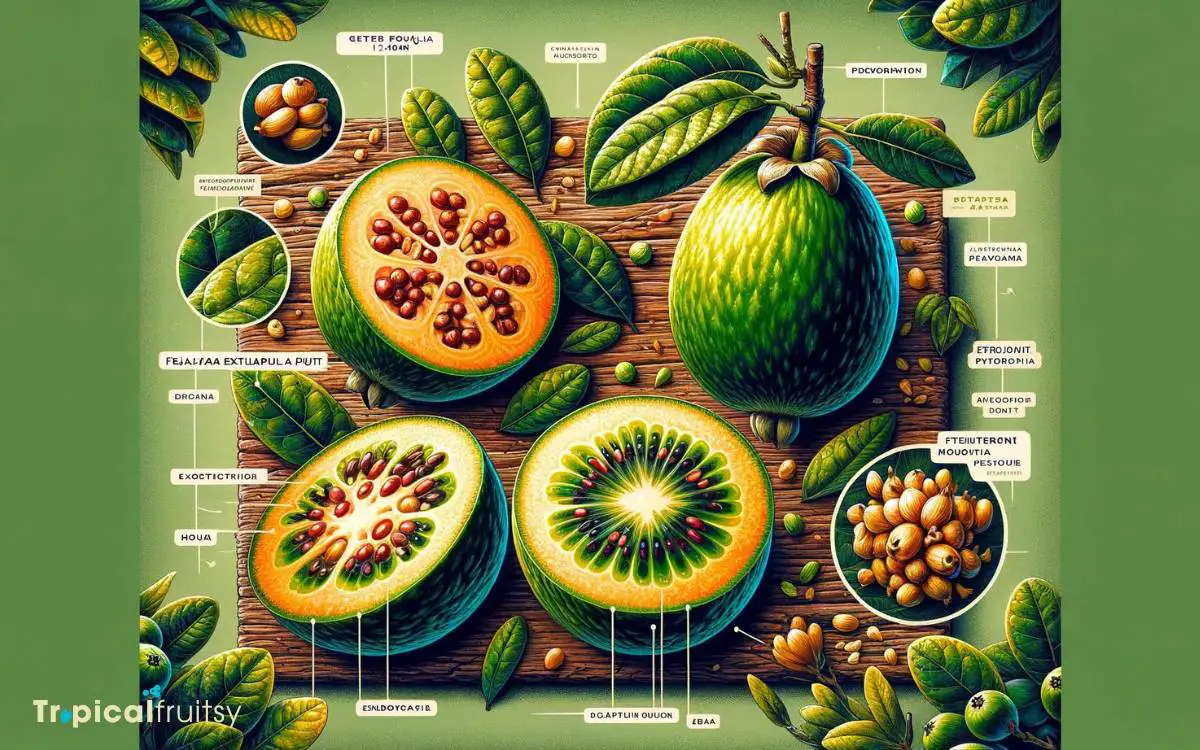
Key Takeaway
Feijoa Fruit: Nutrition and Uses
| Attribute | Description |
|---|---|
| Name | Feijoa / Pineapple Guava |
| Origin | South America |
| Flavor Profile | Pineapple, Apple, Mint |
| Nutritional Content | High in Vitamin C and Dietary Fiber |
| Growth Habitat | Mild, Subtropical Climates |
| Harvest Season | Fall |
| Ripeness Indicator | Slight softness to the touch |
| Storage | Room temperature until ripe, refrigerate afterward |
| Culinary Uses | Smoothies, desserts, jams, salads |
| Health Benefits | Boosts immune system, aids in digestion |
Origins and History

Although native to South America, feijoa has spread globally due to its unique flavor and nutritional benefits.
Initially found in the highlands of southern Brazil, northern Argentina, western Paraguay, and Uruguay, the Acca sellowiana (botanical name for feijoa) is a member of the Myrtaceae family.
Its introduction to other regions, including New Zealand and California, occurred in the early 20th century, where it has since established itself as a valuable crop.
The plant thrives in subtropical climates with mild winters, leading to its successful cultivation in diverse geographical areas. Its transfer across continents is attributed to explorers and botanists who recognized the fruit’s potential for adaptation to similar climates.
The feijoa’s historical journey reflects a pattern of botanical exchange and agricultural innovation.
Distinctive Flavor Profile
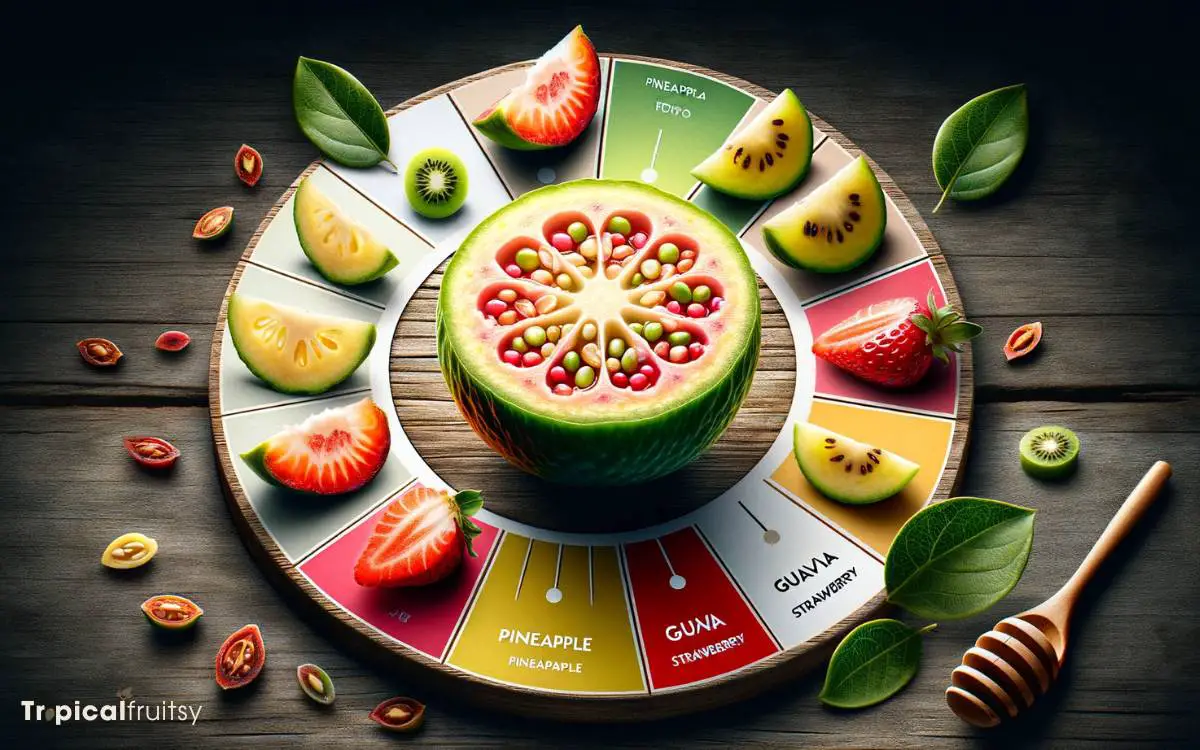
The flavor profile of the feijoa fruit is marked by pronounced notes of sweet pineapple. It also possesses a guava-like taste that contributes to its unique sensory appeal.
This combination of flavors makes feijoa distinctive among tropical fruits.
Sweet Pineapple Notes
Feijoa fruit’s distinctive flavor profile boasts sweet pineapple notes with a complexity that’s unmatched in other tropical fruits. This unique taste isn’t only intriguing but also highly sought after by culinary enthusiasts.
The flavor compounds present in feijoa include esters and terpenes, which contribute to its aromatic sweetness and hint of tartness.
When analyzing the fruit’s palatability, three key attributes emerge:
- Aromatic Volatiles: Feijoa’s scent carries a strong sweet fragrance reminiscent of tropical climates.
- Ester Concentration: The fruit’s esters are responsible for the sweet and tangy flavor notes that are often compared to pineapple.
- Tartness Balance: A subtle acidity underlies the sweetness, adding depth to each bite.
Understanding feijoa’s flavor profile is crucial for appreciating the fruit’s gastronomic potential.
Guava-like Taste
Many describe the feijoa’s flavor as reminiscent of guava, featuring a distinctive taste profile that further enriches its culinary appeal.
This tropical fruit possesses a complex flavor matrix, where the initial guava-like essence is often the most pronounced.
Analytically, the feijoa’s taste is an amalgamation of sweet and tart notes, paralleling the guava’s inherent characteristics but with nuanced variances.
The feijoa’s aromatic compounds contribute to its unique flavor profile, distinguishing it from its tropical counterparts.
Technically speaking, the feijoa’s gustatory identity is shaped by its volatile organic compounds, which are responsible for the fruit’s sensory attributes.
Connoisseurs appreciate its singular taste, often exploiting the feijoa’s guava-like tones in various culinary applications that demand precision and a sophisticated palate.
Nutritional Benefits

Feijoas are prized for their high vitamin C content, which supports immune system function and skin health. The fruit’s fiber-rich composition aids in digestion and contributes to a feeling of satiety.
Additionally, feijoas possess antioxidant properties that combat oxidative stress and may reduce the risk of chronic diseases.
High Vitamin C
They’ll find that the feijoa fruit is a remarkable source of vitamin C, offering a range of nutritional benefits. This essential nutrient is pivotal for the body’s various functions, including the synthesis of collagen, iron absorption, and the maintenance of the immune system.
The high vitamin C content in feijoas not only enhances overall health but also acts as a potent antioxidant.
Key nutritional highlights of vitamin C in feijoas include:
- Immune System Support: Vitamin C is integral to the body’s defense mechanism against infections and diseases.
- Collagen Production: It plays a critical role in collagen synthesis, aiding in wound healing and the maintenance of skin integrity.
- Antioxidant Properties: As an antioxidant, vitamin C helps combat oxidative stress and may reduce the risk of chronic diseases.
Fiber-Rich Content

In addition to its vitamin bounty, the feijoa fruit boasts a high fiber content, which is essential for digestive health and can aid in the prevention of various gastrointestinal conditions.
The fibrous nature of feijoa contributes to a feeling of fullness, supporting weight management efforts by reducing overall calorie intake.
Moreover, fiber aids in the regulation of blood sugar levels by slowing the absorption of sugar into the bloodstream.
| Nutrient | Content in Feijoa |
|---|---|
| Dietary Fiber | High |
| Soluble Fiber | Present |
| Insoluble Fiber | Present |
| Total Carbohydrates | Moderate |
Analyzing the dietary fiber composition, feijoa contains both soluble and insoluble fiber, each with distinct health benefits. Soluble fiber helps to lower cholesterol levels, while insoluble fiber improves bowel regularity.
This dual fiber presence underscores feijoa’s role in a balanced diet. Transitioning to another of its health-promoting features, feijoa also contains a spectrum of antioxidant properties.
Antioxidant Properties
Feijoa’s nutrient profile includes a potent mix of antioxidants that combat cellular damage and support overall health.
These antioxidants are crucial in neutralizing free radicals, molecules that can lead to oxidative stress and chronic diseases.
Feijoa fruit is particularly rich in the following compounds:
- Vitamin C: A powerful antioxidant that also supports immune function.
- Polyphenols: Plant-based chemicals effective in reducing inflammation and protecting against heart disease.
- Chlorogenic acid: Known for its role in modulating metabolism and potentially reducing the risk of type 2 diabetes.
Through its antioxidant composition, feijoa provides a robust defense against environmental and biological stressors. These nutritional benefits make the fruit a valuable addition to a health-conscious diet.
Cultivation and Harvesting

Feijoa plants require temperate climates with mild winters for successful cultivation and typically produce fruit in the autumn.
They thrive in well-drained soil with a pH between 5.5 and 7.0, and they demand regular watering during the growing season to ensure optimal fruit development.
Farmers must monitor for pests such as fruit flies and meticulously time the harvest to coincide with the fruit’s peak ripeness.
| Growth Stage | Duration | Key Actions |
|---|---|---|
| Germination | 3-4 weeks | Maintain moist soil conditions |
| Flowering | Late spring | Pollinate flowers if necessary |
| Fruit Set | Summer | Apply fertilizers for fruit growth |
| Maturation | Early autumn | Monitor for disease and pests |
| Harvesting | Mid to late autumn | Pick when fruit emits strong, sweet aroma |
As feijoas do not continue to ripen after harvest, precise timing is crucial. This leads to the importance of selecting and storing feijoas properly to maximize their shelf life and flavor.
Selecting and Storing Tips
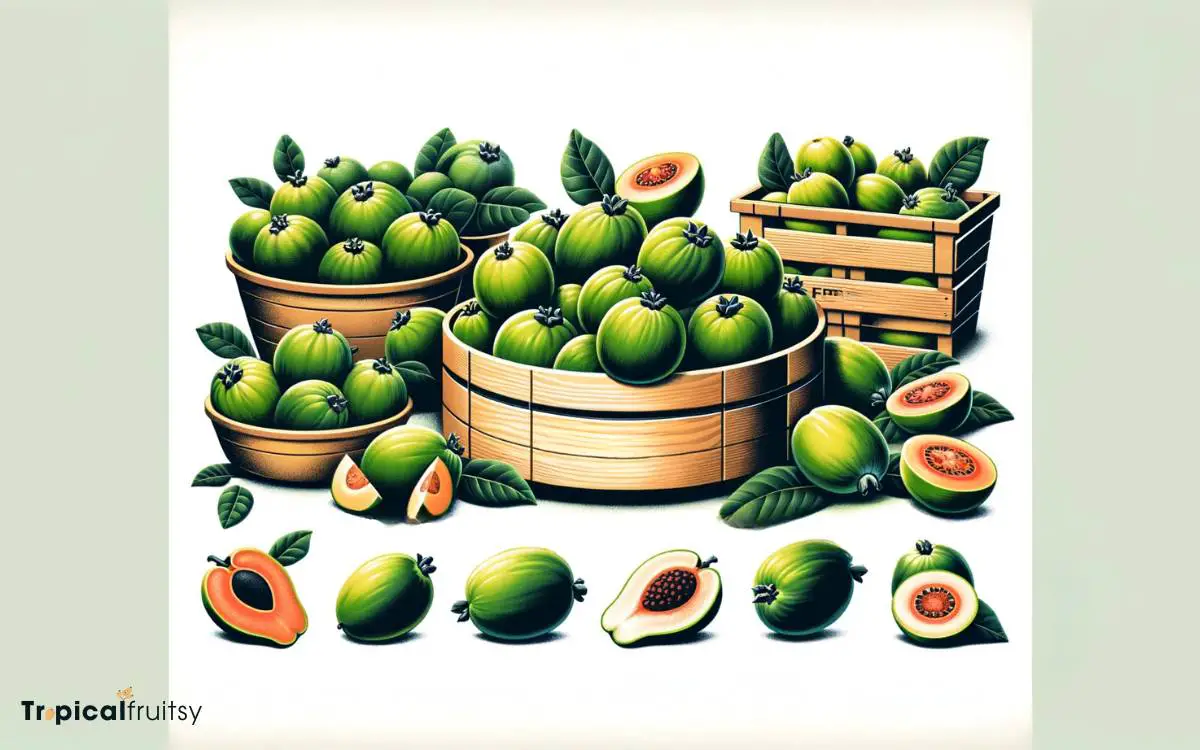
Once harvested, it’s essential to select and store feijoas correctly to maintain their quality and extend their shelf life. When selecting feijoas, one should assess the firmness of the fruit; a slight give indicates ripeness.
The skin’s color should be a vibrant green, and the fruit should be free of blemishes and soft spots, which may suggest over-ripeness or spoilage.
To optimize storage, consider the following:
- Store unripe feijoas at room temperature until they begin to soften.
- Refrigerate ripe feijoas to slow down the ripening process, ideally in a plastic bag to retain moisture.
- Consume refrigerated feijoas within 5-7 days to enjoy their optimal flavor and texture.
Adhering to these guidelines ensures maximal enjoyment of the feijoa’s unique taste and nutritional benefits.
Culinary Uses

Commonly incorporated into a variety of dishes, chefs often use feijoa to add a distinctive sweet and tangy flavor to their culinary creations.
The fruit’s unique taste profile offers a blend of pineapple, guava, and strawberry notes, which is highly valued in gastronomic circles. Feijoa can be utilized in both its raw and cooked forms, expanding its versatility in the kitchen.
Raw feijoa is frequently featured in fruit salads, where its aromatic quality enhances the overall dish.
Conversely, when cooked, feijoa’s flavors intensify, making it an exceptional component in compotes, chutneys, and jams.
Additionally, its pulp can be pureed for use in desserts, such as mousses and sorbets, or incorporated into savory sauces that accompany meat dishes, providing a complex, fruity counterpoint.
Health Implications
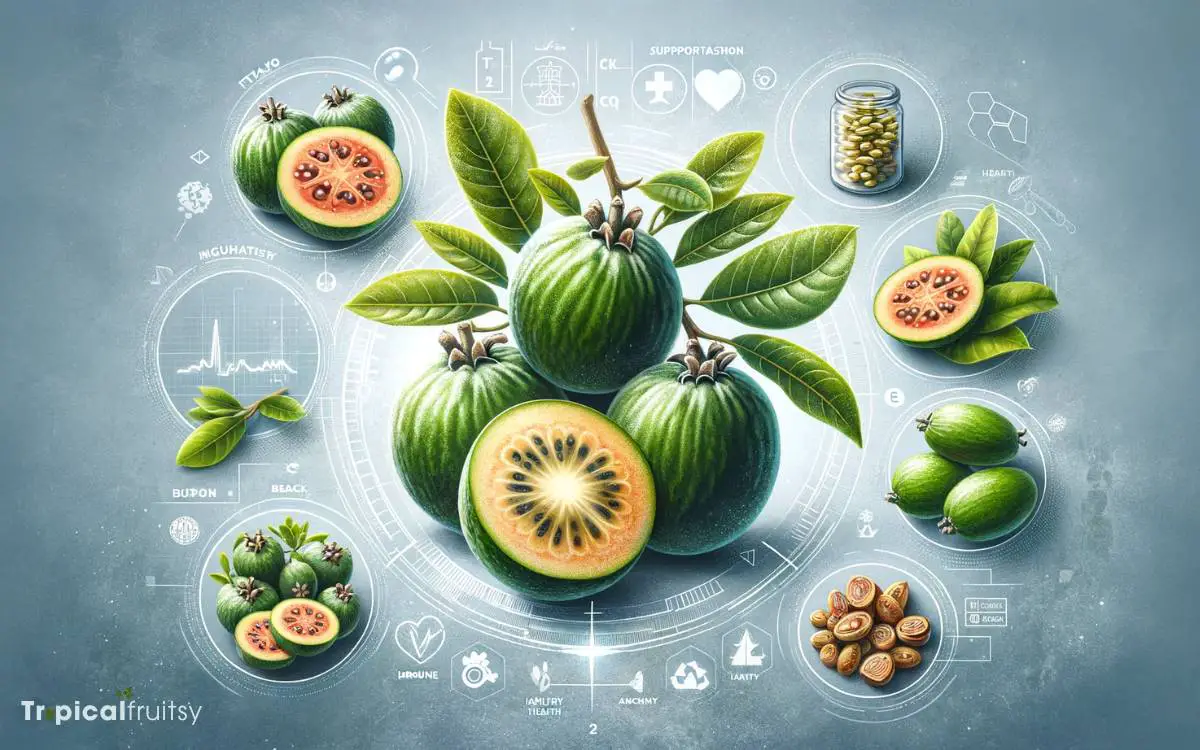
Many studies suggest that consuming feijoa fruit can offer significant health benefits due to its high vitamin, mineral, and antioxidant content. The fruit is packed with essential nutrients that are key to maintaining optimal health.
- Vitamin C: Feijoa is rich in vitamin C, which is crucial for immune function, collagen synthesis, and the absorption of iron.
- Dietary Fiber: The high fiber content in feijoas supports digestive health and may aid in the prevention of constipation.
- Antioxidants: Feijoas contain several antioxidants, including vitamin E and the flavonoid quercetin, which combat oxidative stress and may reduce the risk of chronic diseases.
The analytical assessment of feijoa’s nutritional profile reveals its potential to positively impact human health, warranting its inclusion in a balanced diet.
Where Is Feijoa Fruit from

Feijoa, also known as pineapple guava or guavasteen, is originally from the highlands of southern Brazil, northern Argentina, western Paraguay, and Uruguay.
This fruit has been widely cultivated in other parts of the world, including New Zealand, where it has become very popular and is often considered synonymous with local produce, although it is not native to the region.
Feijoas are valued for their unique flavor, which is described as a mix of pineapple, guava, and strawberry, and they have a short season in the spring and autumn.
Is Feijoa a Citrus Fruit

No, feijoa is not a citrus fruit. It belongs to the Myrtaceae family, which is different from the Rutaceae family that includes citrus fruits like oranges, lemons, and limes.
Feijoa, or Acca sellowiana, is more closely related to other types of fruit such as guava and eucalyptus.
The confusion might come from its tangy flavor, which can remind some of citrus, but botanically and genetically, feijoas are not classified as citrus fruits.
What Type of Fruit Is a Feijoa
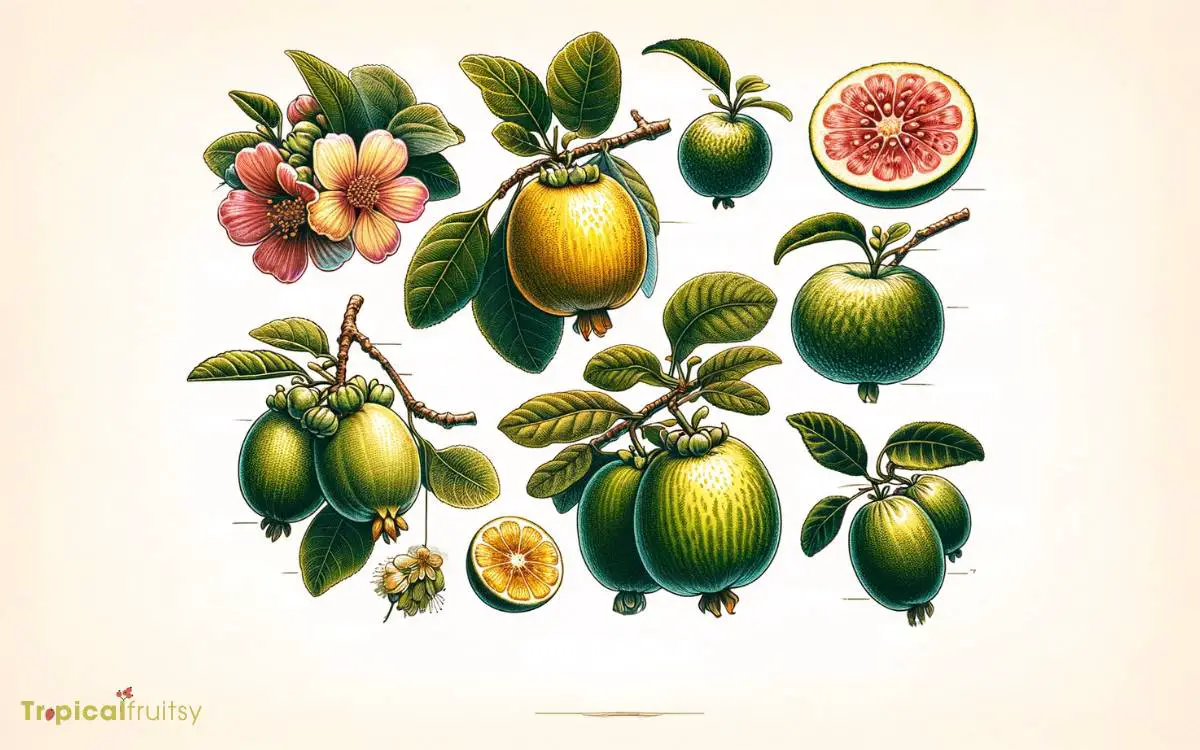
Feijoa is a type of berry, known scientifically as Acca sellowiana. In botanical terms, it’s classified as a berry because it develops from a single ovary and contains multiple seeds embedded within the flesh.
Feijoas have a green skin and a soft, juicy interior filled with a unique, aromatic flavor that combines notes of pineapple, guava, and sometimes mint or apple.
They are enjoyed fresh, but can also be used in cooking and baking, adding a distinctive taste to various dishes and desserts.
Conclusion
The feijoa fruit, with its unique taste and rich nutritional profile, stands as a testament to the adage, ‘good things come in small packages.’
Careful cultivation yields this aromatic bounty, which can be judiciously selected and stored for optimal freshness.
Its diverse culinary applications and potential health benefits underscore the feijoa’s value, making it a fruit that both nourishes the body and delights the palate with its singular flavor.



